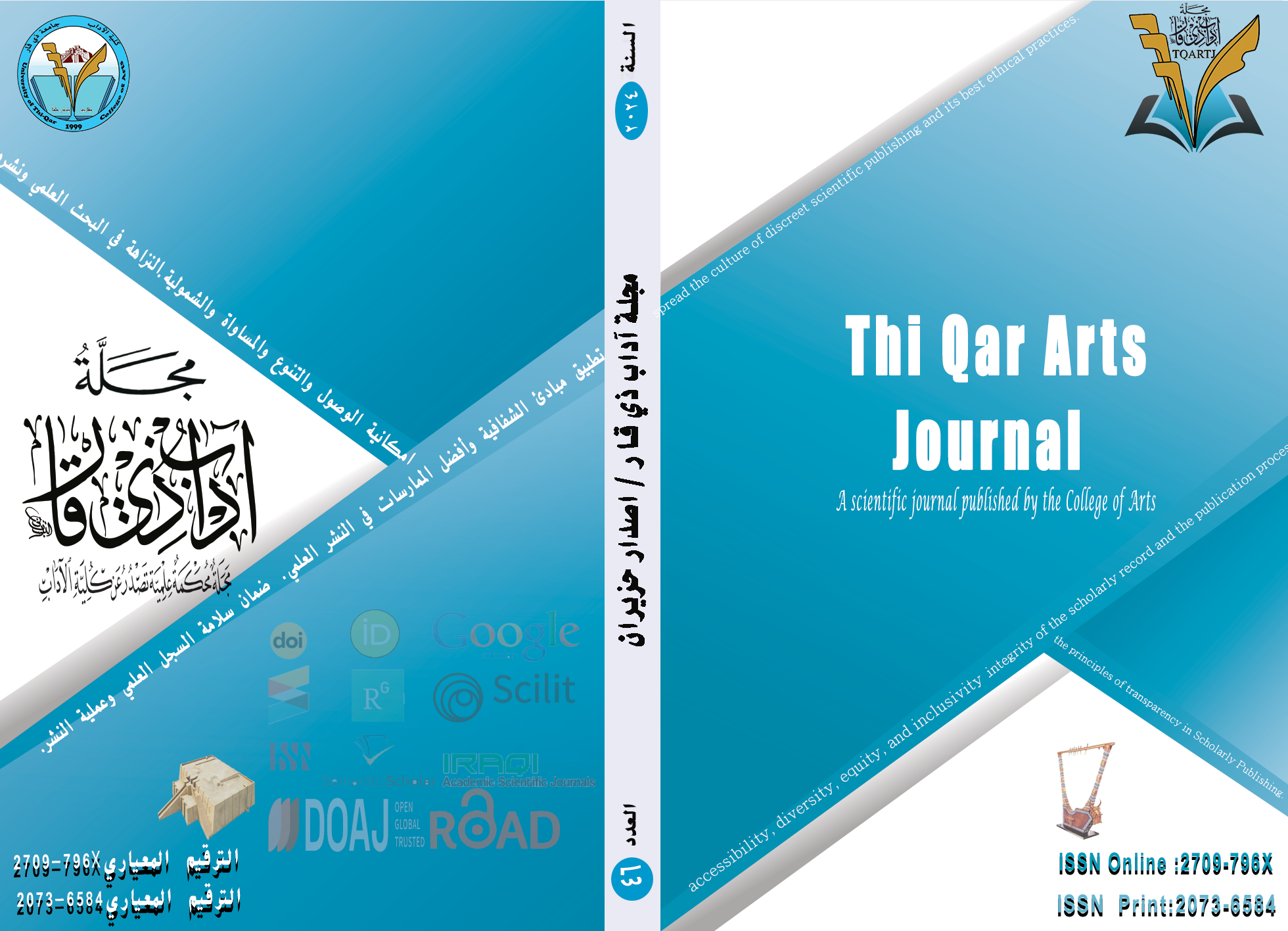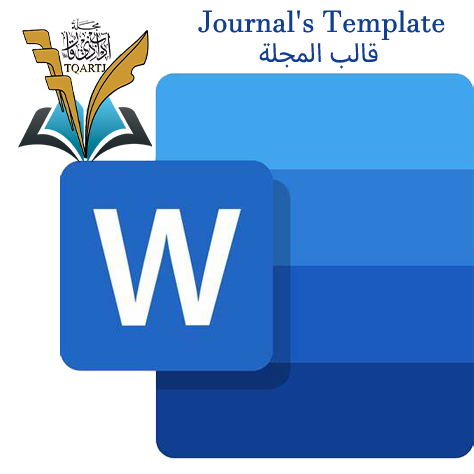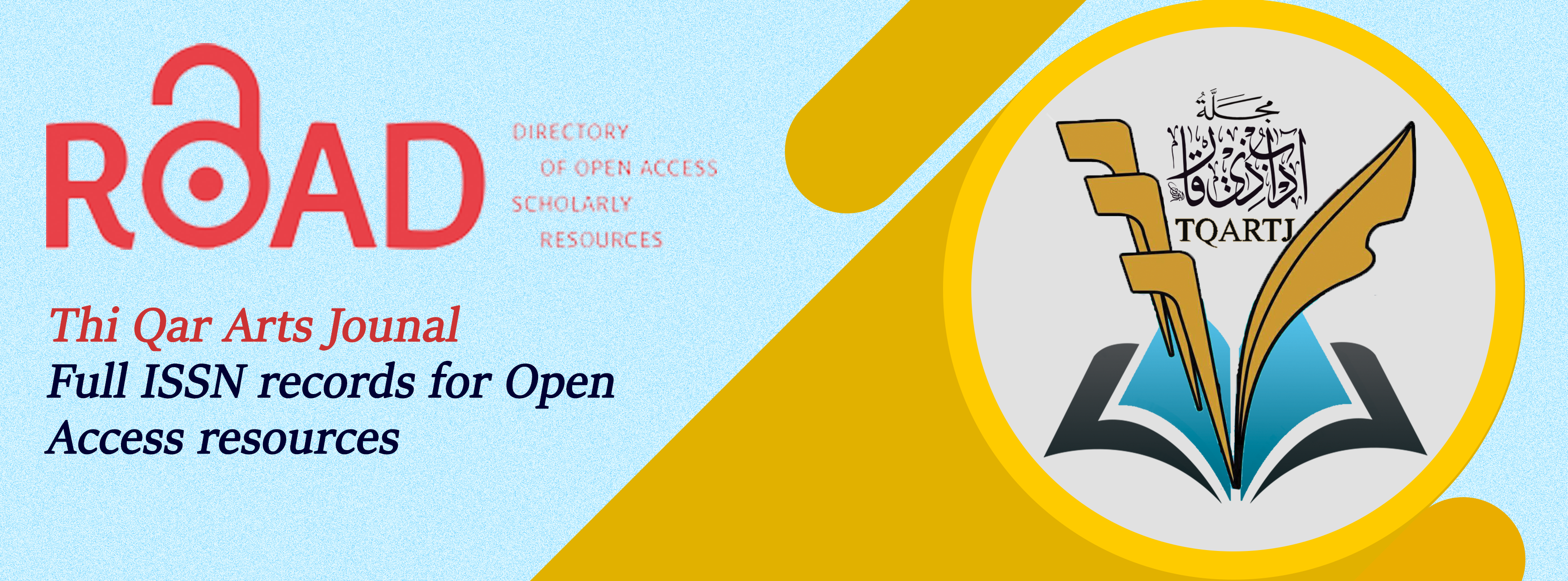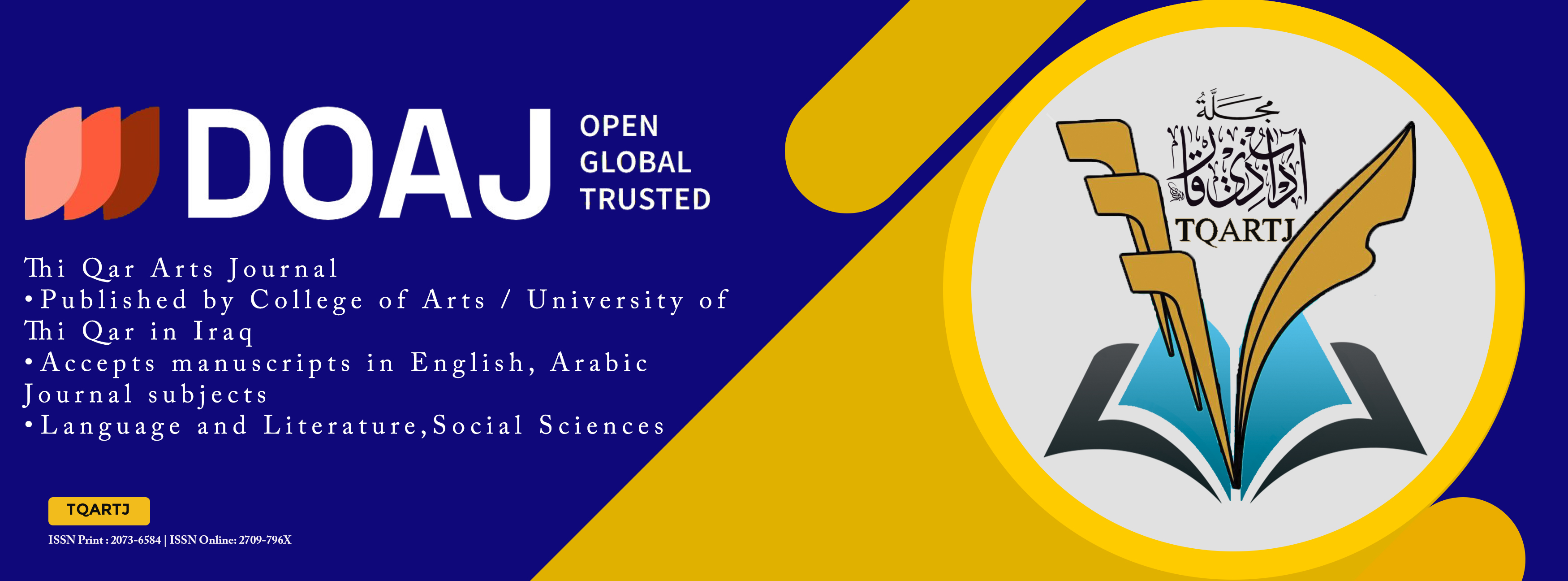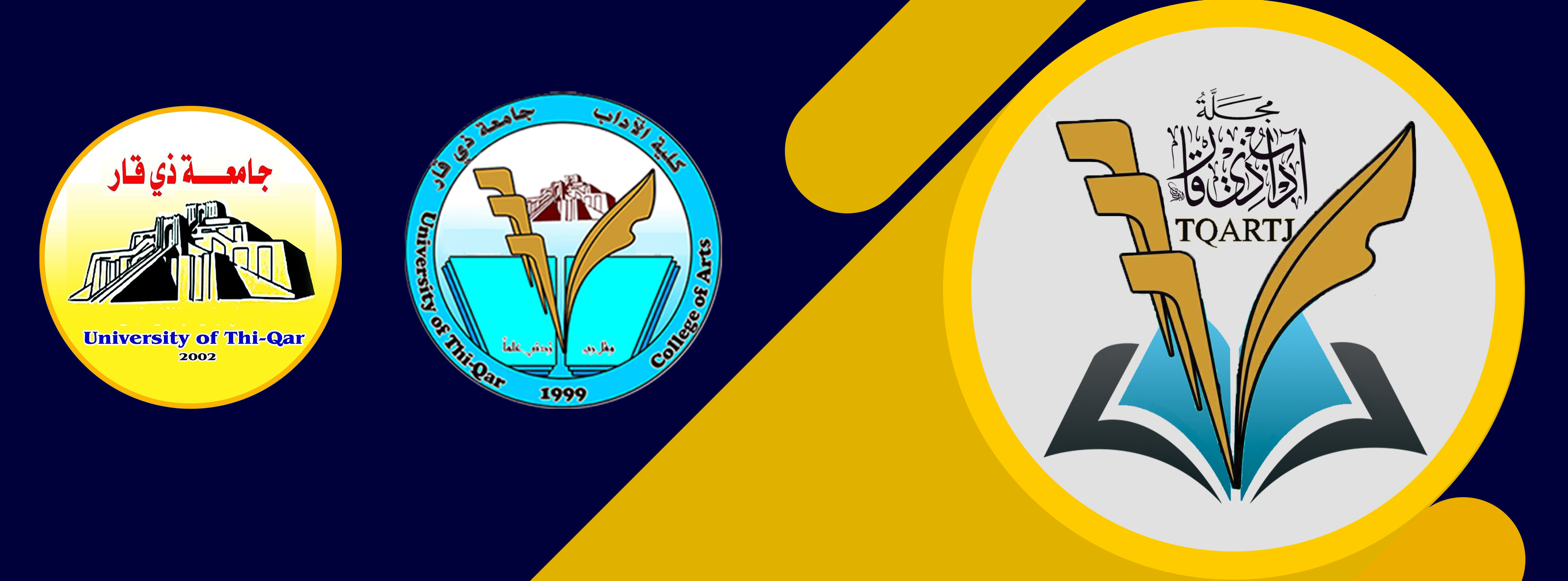Watching is One of the Forgotten Linguistic Novel Methods
DOI:
https://doi.org/10.32792/tqartj.v5i46.623Keywords:
authors of readings, dictionaries, expressions, listening, language transmissionAbstract
Linguists needed to combine the language in order to serve the Holy Qur’an and the noble hadith, with a sincere desire to preserve the language of the Arabs, so they adopted the methods of those who preceded them, especially those who read and hadith, so that the narrator is trustworthy, the chain of transmission is connected, and the text is straight, and that the narrator takes the narration directly by hearing from the Arabs. Or the narration from those who were quoted by one of the following methods:
1- Hearing the Sheikh’s recitation.
2- Hearing the narrator’s recitation to the sheikh.
3- Hearing someone else recite it to the sheikh while he was listening.
4- Munawala, which is when the sheikh hands him a book that he has written or narrated to others, and allows him to narrate it.
5- Al-Wajada, which is taking the lines of trustworthy people with confidence in their knowledge, and what they are known for in terms of accuracy and mastery.
As for what happened after that, they do not take it into account, such as taking from newspapers, because it missed the condition of accuracy in transmission, due to ignorance of the knowledge of those who narrated it or reproduced it.
However, the scholars neglected another method that they did not mention among the methods of transmitting the language despite the presence of its wide effects in their narratives. Linguists use it in detailing what they witnessed of animals, plants, and inanimate objects, what was mentioned and was not detailed in it, and what was not mentioned, so it needs detailing. the present, and how it possessed sufficient tools to convey the meanings of words to the listener, and to draw the shades around them that enabled them to reach his mind, until the matter ended with what the illustrated dictionaries have concluded today, and if it were not for them, many words would have become ambiguous and devoid of the significance that pours into it the soul, and broadcasts in it life, and bring it closer to the reader.
Downloads
References
Al-Baath Al-Hathith Explanation of the Abbreviation of the Sciences of Hadith, by Abi Al-Fida Ismail Ibn Katheer (701-774), investigation: Ahmed Muhammad Shaker, Muhammad Ali Sobeih Library and Printing Press in Egypt, third edition.
Crown of the Bride from the Jewels of the Dictionary, by Sayyid Muhammad Murtada al-Husayni al-Zubaidi (1145-1205), investigation: a group of investigators, the Arab Heritage Series, Kuwait Government Press, second edition, 1407 AH-1987 CE.
Training the narrator in explaining Taqreeb al-Nawawi, by Jalal al-Din al-Suyuti (-911), second edition, 1972 AD.
The arrangement of the book Al-Ain by Khalil bin Ahmed Al-Farahidi (-175), investigation: Dr. Mahdi Al-Makhzoumi, and Dr. Ibrahim Al-Samarrai, corrected by Mr. Asaad Al-Tayeb, Aswa Publications, Qom, first edition, 1414 (AH).
Definitions, by Mr. Al-Sharif Abi Al-Hassan Ali Bin Muhammad Bin Ali Al-Husseini Al-Jarjani, Al-Hanafi (-816), putting his footnotes and indexes, Muhammad Basil Oyoun Al-Soud, Muhammad Ali Baydoun Publications, Dar Al-Kutub Al-Ilmiya, Beirut, Lebanon, first edition, 1421 AH-2000 AD .
The sequel, appendix, and connection, to the book Taj al-Lughah wa Sihah al-Arabiya, by al-Hasan ibn Muhammad al-Saghani (577-650), investigation: a group of investigators, Dar al-Kutub Press, Cairo, 1970.
Refining the Language, by Abu Mansour Muhammad bin Ahmad Al-Azhari (282-370), investigation: Abd al-Salam Muhammad Haroun and others, on the edition of the Authorship, Translation and Publishing Committee, 1967.
Al-Jami’ al-Sahih, which is Sunan al-Tirmidhi, by Abu Issa Muhammad ibn Issa ibn Surah (209-297), investigation: Ahmed Muhammad Shaker, Mustafa Al-Babi Al-Halabi Library and Printing Company in Egypt, first edition, 1382 AH-1962 AD.
Jamharat al-Lughah, by Abu Bakr Muhammad ibn al-Hasan ibn Duraid al-Azdi (223-321), investigation: d. Ramzi Mounir Baalbaki, House of Knowledge for Millions, Beirut, Lebanon, first edition, 1987.
Characteristics, by Abu al-Fath Uthman ibn Jinni (-392), investigation: Professor Muhammad Ali al-Najjar, Dar al-Huda for printing and publishing, Beirut, Lebanon.
The Court of Literature, by Abu Ibrahim Ishaq bin Ibrahim Al-Farabi (-350), investigation: d. Ahmed Mukhtar Omar, Arabic Language Academy, Egypt, 2003.
Al-Zubaidi in his book The Crown of the Bride, Dr. Hashem Taha Shalash, Dar Al-Kutub for Printing, Baghdad, first edition, 1401 AH-1981 AD.
Al-Sahih fi al-Lughah wa Taj al-Arabiyyah, by Ismail bin Hammad al-Jawhari (-398), investigation: Ahmed Abd al-Ghafur Attar, Cairo, 1376 AH-1956 AD.
Al-Abab Al-Zakher, and Al-Labbab Al-Fakher, Harf Al-Seen, Al-Ta’a, and Al-Fa’a, by Al-Hassan bin Muhammad Al-Saghani (577-650), investigation: Sheikh Muhammad Hassan Al Yassin, Ministry of Culture and Information, Dar Al-Rasheed for Publishing, Baghdad, Dar Al-Tali’ah for Printing and Publishing, Beirut, 1981 AD.
Al-Abab Al-Zakher and Al-Lab Al-Fakher, Harf Al-Hamza (vol. 1 / s. 1), by Al-Hassan bin Muhammad Al-Saghani (577-650), investigation: Fair Muhammad Hassan, first edition, 1978 AD.
Sciences of Hadith, by Ibn al-Salah, investigation: Izz al-Din Atar, second edition, 1972 AD.
The Conquests of Countries, by Abu al-Hasan al-Baladhuri, printed under the supervision of the Heritage Investigation Committee, Al-Hilal Library Publications, Beirut - Lebanon.
Al-Fihrist, by Abu al-Faraj Muhammad ibn Ishaq, known as al-Nadim (-380), compiled, explained and commented on by Dr. Youssef Ali Taweel, Dar Al-Kutub Al-Ilmiya, Beirut, Lebanon.
Al-Qamoos al-Muhit, by the linguist Majd al-Din Muhammad ibn Yaqoub al-Fayrouzabadi (729-817), prepared and presented by Muhammad Abd al-Rahman al-Maraashli, Dar Ihya al-Turath al-Arabi, Beirut - Lebanon, second edition, 1424 AH-2003.
Lisan al-Arab, by Abi al-Fadl Jamal al-Din Muhammad ibn Makram ibn Manzoor (-711), Dar Al-Hilal Library - Dar Al-Bahar, on the edition of Dar Sader, Beirut, Lebanon.
Al-Muhakim, and the Great Ocean, by Ali bin Ismail Ibn Saydah (-458), investigation by a group of investigators, Institute of Arabic Manuscripts, Cairo, second edition, 1424 AH-2003 AD.
Al-Muheet fi al-Lughah, by the author Ismail bin Abbad (-385), investigation: Sheikh Muhammad Hassan Al Yasin, publications of the Ministry of Culture and Information, Dictionaries and Indexes Series, (36), Dar Al-Rasheed, first edition, 1987 AD.
Lexicon of Writers, by Yaqut bin Abdullah Al-Hamwi (-626), published by Ahmed Farid Al-Rifai, Al-Ma’moun Press, Egypt.
The Brief Dictionary, prepared by a group of professors, the Arab Republic of Egypt, the Arabic Language Academy, Dar Al Tahrir Press for Printing and Publishing, 1989 AD.
The Intermediate Dictionary, directed by Ibrahim Mustafa, and others, the Arabic Language Academy, the General Administration of Lexicons, and the Revival of Heritage, Dar Al-Da`wa, Istanbul, Turkey, 1989.
An-Nabat, by Abu Hanifa Ahmed bin Dawood al-Dinuri (-282), verified and explained by Bernhard Levin, Franz Schneider Publishing House, Wiesbaden, 1394 AH-1974 CE.
Downloads
Published
License
Copyright (c) 2024 Dr. Qassem Muhammad Kamel

This work is licensed under a Creative Commons Attribution 4.0 International License.
The journal applies the license of CC BY (a Creative Commons Attribution International license). This license allows authors to keep ownership of the copyright of their papers. But this license permits any user to download, print out, extract, reuse, archive, and distribute the article, so long as appropriate credit is given to the authors and the source of the work. The license ensures that the article will be available as widely as possible and that the article can be included in any scientific archive.
